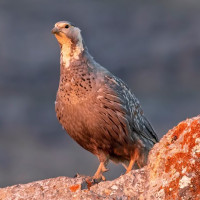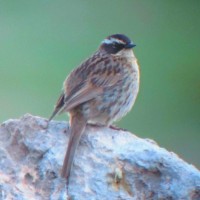Opis
Although it hosts many great species, Anti-Taurus Mountains is a complex mountain range. So it is hard to find and observe the birds from reasonably distances. This route gives good opportunities for birders to drive through the inner parts of the mountain range and observe many species from the car. Many alpine species such as ular kaspijski, Radde's Accentor, płochacz halny, śnieżka, Gilak ciemnogłowy and kulczyk królewski are potential species that you can observe on this route. Additionally, it is possible to see orzeł przedni, modrak, pomurnik, góropatwa azjatycka, kowalik skalny and górniczek.
Szczegóły
Dostęp
This route is only accessible with a private car.
Teren i siedlisko
Góry , Kanion/klif , Rzadkie drzewa i krzewyWarunki
Górzysty , Skalisty , Suchy , Brak cieniaTrasa dookoła
NieCzy luneta będzie przydatna ?
TakUdany sezon obserwacyjny
Wiosna , LatoNajlepszy czas na wizytę
Wiosna , Wiosenne migracje , LatoTrasa
Droga nieutwardzonaPoziom trudności szlaku pieszego
Średnio wymagający spacerDostępne
SamochódCzatownia/platforma obserwacyjna
NieDodatkowe informacje
Firstly, snow is very common until the beginning of June in the area. It is better to be careful during heavy snow. Secure your car for any potential malfunctions, because there is no human settlement in 20 km distance. Secondly, never leave the road and never try to climb even to lowest hills. The rocks on the slopes are not stable and could cause serious injuries or worse. The road was originally created for a mine which is still active at the end of the road. For any possible emergencies, they have first aid materials & initial medical assistance.
Tips to observe the species;
1. ular kaspijski is relatively common in the region and easy to hear its call. However, it is very hard spot its location. It is better spare good amount of time to scan the slopes with telescope and be patient.
2. pomurnik is another possible species on the route, especially on the cliffs around the mine.
3. Most of passerines such as Gilak ciemnogłowy and kulczyk królewski hang out around the salt piles near the mine.
4. There are many wild goats you can encounter in the area.


